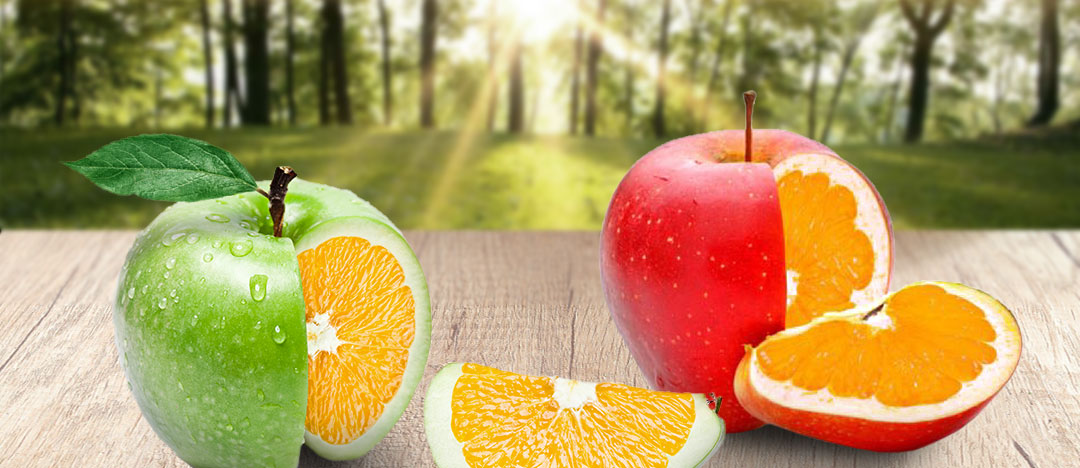The Similarities Between Apples And Oranges

The common expression “apples and oranges” is often used when asked to compare two objects that are so different from one another that they should not or cannot be compared. An orange and an apple may be considered vastly different if contrasted exclusively by their color, skin texture, and flavor. But doing so does not account for all their attributes and limits our own critical thinking to the obvious, familiar, and conventional. While it is true that apples and oranges differ in their color, skin texture, and flavor, they are similar in size and shape. Both are a fruit that grows on trees and comes in a multitude of varieties. Based on this simple evaluation, it seems that there is more that unites apples and oranges than divide them.
By seeing the similarities among the differences, our minds become open to the connections between seemingly unrelated things. Once elements from completely different domains are paired, the whole not only becomes greater than the sum of the parts, but uniquely distinct.
Nike’s first pair of running shoes was inspired by waffles. One morning over breakfast, Nike co-founder and University of Oregon track-and-field coach, Bill Bowerman, realized that the grooves in a waffle iron could be used to mold a sole that would make track shoes lighter and grip different types of running surfaces better than the traditional metal spikes used at the time. Bill would not have made this discovery if he believed that the only things that could be compared were from within a homogeneous “apples to apples” domain. If Bill believed in the apples-and-oranges idiom, the idea of finding similarities between a waffle iron and a running shoe would have been so absurd that the thought would never have crossed his mind.
Bill was not the only person whose epiphany bridged two seemingly unrelated objects to crystalize a breakthrough concept.
The sawmill’s cyclonic separator was James Dyson’s “apple” for his bagless vacuum “orange.” On the surface, there were no obvious similarities between an industrial sawmill and a household vacuum – until parts of the whole were compared in isolation.
The purpose of a cyclonic separator is to remove sawdust from the air in the mill, just as a vacuum sucks up dirt from a floor. If the notion of pairing a cyclonic sawmill separator with a standard vacuum cleaner was thought of literally, it would have been immediately dismissed because of their enormous differences in size. Instead of determining the feasibility of the literal dimensions of each object, James Dyson focused on their function and application. This enabled him to concentrate on the intangible principles and avoid the physical distractions that might have derailed his efforts.
Bill Bowerman and James Dyson were not the only people in the world to look at a waffle iron, running shoe, sawmill, and vacuum cleaner, but they were probably one of the few to spot the similarities among the differences. They cross-pollinated ideas from radically different disciplines. The most vital aspect of their success was the mere act of stretching their minds – collecting, comparing, connecting, and combining dissimilar elements from seemingly unrelated domains of “apples and oranges”.
